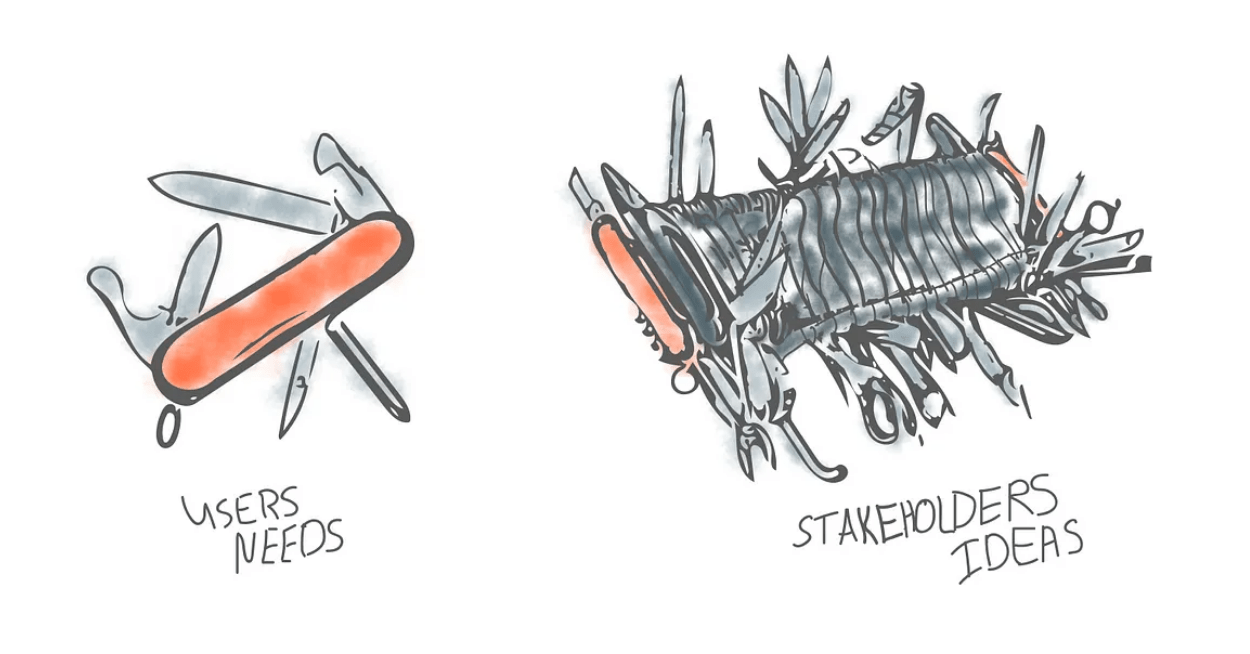
You wanted to heat a dish, set a quick programme for laundry in the washing machine or the navigator to get to an appointment in a hurry. Instead, you were confronted with myriad options and settings that confused, disoriented and, in essence, wasted the time you intended to save. If this has happened to you, you have experienced the effects of a phenomenon that is as widespread as it is still little studied, Feature Fatigue i.e. the difficulty (fatigue) experienced by the user in using products and services 'loaded' with an excessive number of features and settings that make them, in fact, difficult to use to perform the main task for which they were designed.
Unrequested addons
So why are all these additional features added to products when the user, in most cases, only requires the performance of a basic task? The reasons may be many and have different origins. On the one hand, Feature Fatigue is one of the effects of a phenomenon that originates much earlier, during the development process of a new product, when conflicting forces push for the inclusion of additional features that often lead to marginal benefit for the end user. This phenomenon, called Over Featuring indicates a pathological state of the product development process in which the scope of the features offered goes beyond what is required by the users, beyond what was initially planned in the product sheet, or beyond the existing resources allocated to the project.
The Over Featuring phenomenon originates from the concurrence of various, often interrelated factors. First and foremost, it may be an attempt to anticipate and facilitate future phases of product development. In defining a product concept, additional and not strictly necessary features are planned to anticipate creating a margin of tolerance for future re-design or re-styling. Philips, for example, marketed products with silent and/or not fully developed features precisely to leave the door open for future extensions based on market needs. Therefore, having a product with room for manoeuvre in the future can be positive, although the disadvantages to being considered are the additional complexity and longer development time.
Ikea effect
But Over Featuring can also originate unconsciously, from the good intentions of those involved in the development of a new product, project managers, engineers, developers and R&D managers. A typical example is the attachment to a project, a specific technology or a particular feature set just because one has been directly involved in the creation and development process. We have all experienced this with the IKEA effect, the one that makes us overestimate the real value of a object just because we took the time and energy to create it. To us, that object looks beautiful and extraordinarily useful, but when we proudly show it to our friends, we are surprised at their limited enthusiasm. This simple cognitive bias affects the whole process of new product development but is just the tip of the iceberg.
Often, marketing reasons also steer towards Over Featuring: feature-rich products seduce the consumer, even if they later prove to be unwieldy in everyday life. Indeed, the phenomenon has important and tangible consequences: NASA has listed over-featured design as one of the top ten causes of failure in the new product development process. Although there are still no answers or solutions, the management literature points to a drastic collapse of the product's ergonomic component linked to increased use complexity. We can experience this effect every day when we cannot find that specific setting in our phone or get lost in the myriad of programmes in the washing machine. Having more features brings with it longer development times, higher development costs and, finally, a higher risk of defects due to the high number of functions, with a consequent burden on all support and after-sales processes.
Looking for the solution not to fatigue the user
professionals? Unfortunately, no tool can measure and thus avoid the proliferation of features during the product or service development process. Over the years, different approaches have been developed to manage difficulties in the product development process, which can be divided into three broad groups: Stage-Gate, Agile and Hybrid methods. The Stage-Gate approach is a linear method that divides a project into several stages, or 'gates', each of which must be completed before moving on to the next. This method offers tight control but can be rigid and is not always the most efficient when dealing with changes or unforeseen events. On the other hand, the Agile approach is more flexible and adaptable, ideal for projects with high uncertainty or that require frequent changes. This method emphasises team collaboration, continuous learning, adaptability and continuous review with the customer. However, it can be more complex to manage and requires high involvement from everyone involved. In between, the hybrid approach combines elements of both the Stage-Gate and Agile approaches. A project might start with planning and requirements definition in Stage-Gate style, then move to an Agile approach for development and implementation, which tries to get the best of both worlds, providing initial structure and control, followed by flexibility and adaptability as the project progresses.
Stage-Gate, Agile or Hybrid approaches manage the development process differently, and all three have advantages and disadvantages, different coordination costs and different applicability depending on the context and object of development. In other words, there is no best or worst approach to the new product development process: much is played out on the human, often unconscious side. While waiting for research to study the phenomenon better and propose solutions, managers and developers can still put in place 'corrective' attitudes, e.g. paying more attention when defining the boundaries of a new product development project. The lesson to bear in mind is that underestimating the complexity of a product's use - the mismatch between what is useful to the user and what is offered by the product in terms of features - is not the only one but certainly one of the main causes of new product failure.